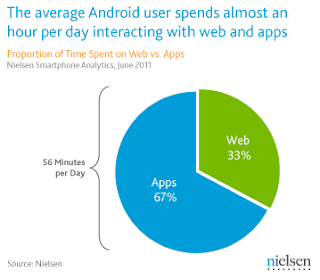"
Traffic
More than 13 million hours of video were uploaded during 2010 and 48 hours of video are uploaded every minute, resulting in nearly 8 years of content uploaded every day
Over 3 billion videos are viewed a day
Users upload the equivalent of 240,000 full-length films every week
More video is uploaded to YouTube in one month than the 3 major US networks created in 60 years
70% of YouTube traffic comes from outside the US
YouTube is localised in 25 countries across 43 languages
YouTube's demographic is broad: 18-54 years old
YouTube reached over 700 billion playbacks in 2010
YouTube Partner Programme
Created in 2007, we now have 20,000+ partners from 22 countries around the world
We pay out millions of dollars a year to partners
Hundreds of partners are making six figures a year and the number of partners making over USD1,000 a month is up 300% since 2010
Monetisation
YouTube is monetising over 3 billion video views per week globally
98 of AdAge's Top 100 advertisers have run campaigns on YouTube and the Google Display Network
The number of advertisers using display ads on YouTube increased tenfold in the last year
Product Metrics
We have more HD content than any other online video site
We have thousands of full-length films on YouTube
10% of YouTube's videos are available in HD
YouTube mobile gets over 320 M views a day (up 3x year/year), representing 10% of our daily views
The YouTube player is embedded across tens of millions of websites
Content ID
Content ID scans over 100 years of video every day
More than 2,000 partners use Content ID, including every major US network broadcaster, film studio and record label
We have more than six million reference files (over 300,000 hours of material) in our Content ID database; it's among the most comprehensive in the world. The number has doubled in the last year
Over a third of YouTube's total monetised views come from Content ID
More than 120 million videos have been claimed by Content ID
Social
Nearly 17 million people have connected their YouTube account to at least one social service (Facebook, Twitter, Orkut, Buzz, etc.)
Over 12 million people are connected and auto-sharing to at least one social network
150 years of YouTube video are watched every day on Facebook (up 2.5x year/year) and every minute more than 500 tweets contain YouTube links (up 3x y/y)
100 million people take a social action on YouTube (likes, shares, comments, etc.) every week
An auto-shared tweet results in 6 new youtube.com sessions on average and we see more than 500 tweets per minute containing a YouTube link
Millions of subscriptions happen each day. Subscriptions allow you to connect with someone you're interested in &endash; whether it's a friend or the NBA &endash; and keep up with their activity on the site
More than 50% of videos on YouTube have been rated or include comments from the community
Millions of videos are favourited every day"
Source:
YouTube press statistics, retrieved 1st August 2011


















